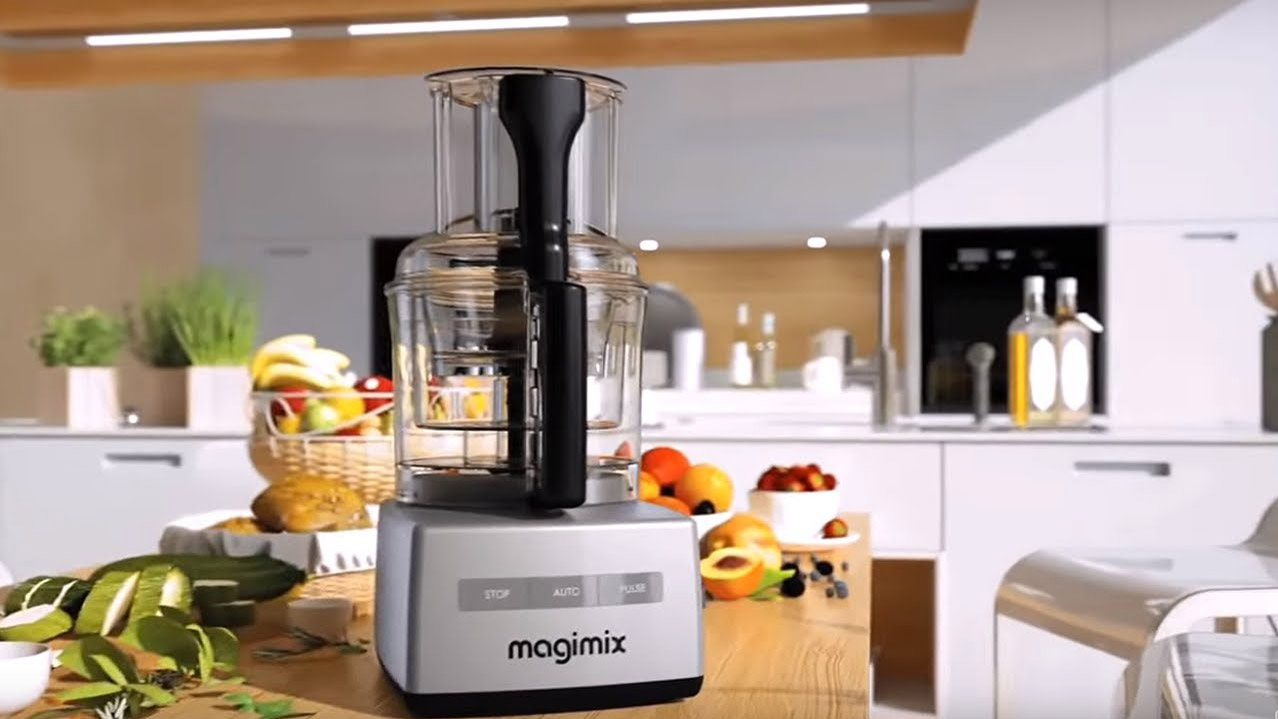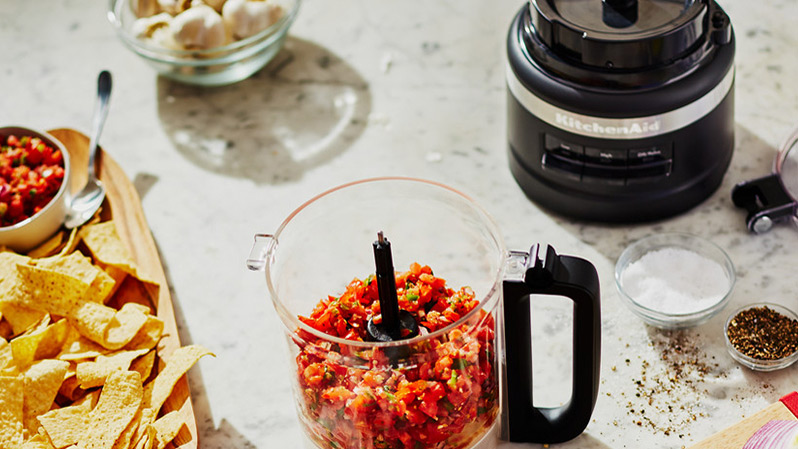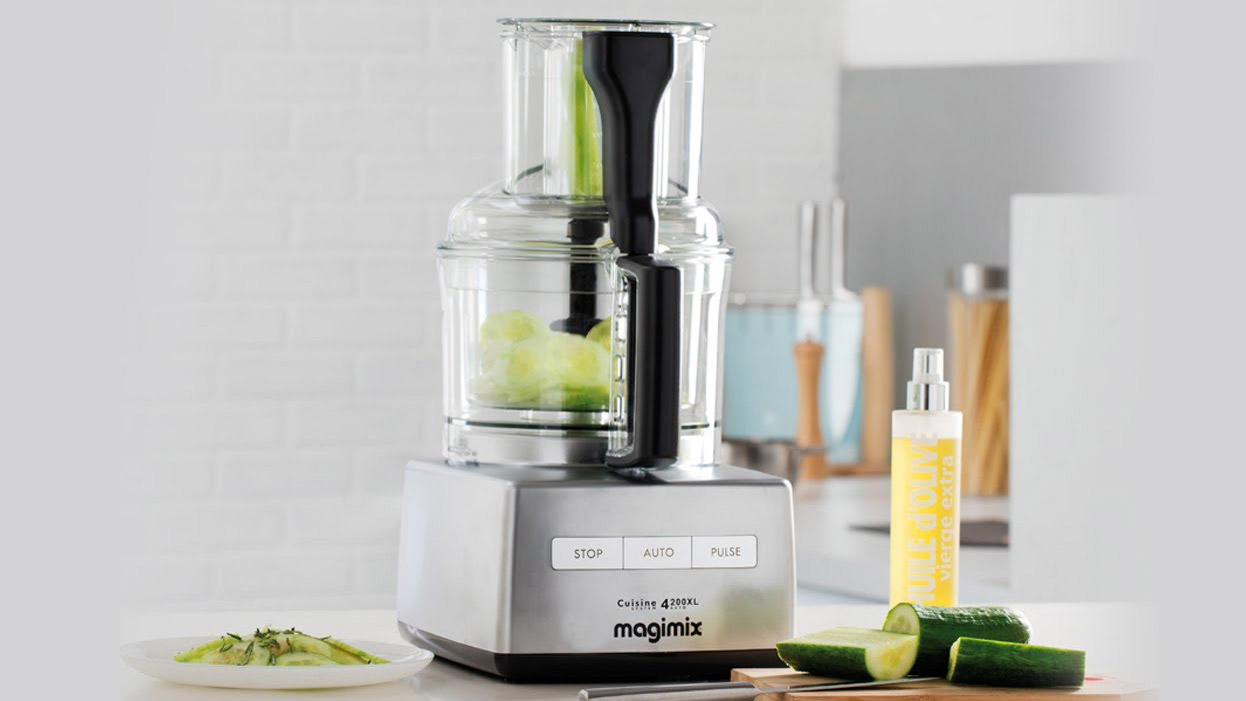KitchenAid KFP1319 vs Magimix 4200XL: which food processor should you choose?

There’s nothing quite like a food processor to save you time in the kitchen. These multipurpose appliances don’t get the credit they deserve and while lots of people focus on filling their kitchens with stand mixers, espresso machines, and blenders, any good cook will know that a food processor is a workhorse that will lend a helping hand when the going gets tough.
From slicing to shredding, chopping, mixing, and in some cases whisking, dicing, and even blending, a food processor is a must-have appliance. It’ll save you time and energy finely shredding vegetables for salads and slaws but is equally useful for grinding beef and mixing up bread dough.
Magimix has a whopping 50 years of expertise and is one of the most well-known brands across the globe for manufacturing food processors. And although KitchenAid hasn’t been making food processors for quite so long, it has a well-respected pedigree in countertop kitchen appliances that spans over 100 years.
The Magimix 4200XL features a 14 cup/ 3 liter capacity, while the KitchenAid KFP1319 offers a similar 13 cup/ 3.1 liter capacity. So we know they’re relatively well matched in size, but what about how they perform? We’ve pitted the two appliances head-to-head to see which will win out across the board.
Best Magimix and KitchenAid food processor deals
Read on to discover how these two food processors compare – or, if you’ve already decided which of the two you wish to buy, check out the best prices right now for Magimix and KitchenAid food processors.

Price
In all but the UK, the Magimix is significantly more expensive and will set you back $399.95 / £300/ AU$899. And if you want to spend even more cash, there are plenty of optional extra accessories that you can buy to beef up the functions of the Magimix, including a citrus press and spiralizing attachments.
The KitchenAid is easier on the wallet, coming in at $249.99 / £299/ AU$499 and there are no additional accessories to buy separately. However, if you want fewer attachments you can plump for the cheaper KitchenAid KFP1318, it’s exactly the same model but it lacks the ability to dice and will set you back $199.99/ £249 (around AU$270) but it’s not available in Australia.
Design
In terms of overall size, there’s not much difference between these two food processors and the capacity is similar, too. However, it’s the accessory storage that sets them apart. The KitchenAid KFP1319 is cleverly designed so that all the accessories slot neatly into a caddy that sits inside the main bowl, meaning that apart from a refrigerator lid, everything is stored inside the food processor. On the other hand, the Magimix comes with a standalone storage box which is bulky to store and measures 6.7 x 11 x 7.9/ 17 x 28 x 20cm (h x w x d).
Both come in a range of colors and with fully dishwasher safe accessories. The Magimix only offers one speed plus pulse, but with the KitchenAid you get the choice of two speeds as well as pulse.
While they both come with a main chopping blade, dough blade and two shredding options, that’s where the similarities end. The Magimix comes with a whisk and a unique BlenderMix insert that allows the food processor to be used to blend liquids such as soups, batters and milkshakes. And inside the main Magimix bowl there are two smaller bowls and a small blade, which are handy for processing smaller quantities.
You don’t get any of these with the KitchenAid, but instead there’s a dicing accessory. And although they both have slicing discs, the Magimix comes with two thickness options whereas the adjustable disc included with the KitchenAid gives you six thicknesses to choose between.
One of the striking design features of the KitchenAid model is its hinged lid that closes with a latch. The lid can easily be removed and replaced with the refrigerator lid, giving added flexibility and allowing you to store foods without tipping them into a separate bowl or tub.
Additionally, the bowl sits directly onto the base more like a blender pitcher than a typical food processor. The Magimix has a more traditional style lid and bowl, both have to be twisted into position and for some people, this will make it trickier to assemble.

Features on test
Both these food processors have a sharp and efficient main blade that can grind meat as well as chop onion and breadcrumbs. Similarly, they both excel at shredding cheese and carrot using the large shredding disc. And although both could easily slice cucumber, we’d say KitchenAid gives more versatility for slicing with its six thickness options.
When it came to shredding chocolate, the Magimix had the edge, producing nice fine shreds with very little melting, but 18% of the chocolate remained on top of the disc at the end. The KitchenAid struggled though, there was some melting, and larger chunks in with the fine shreds. Additionally, around 35% remained on top of the disc at the end.
Again, when mixing bread dough, the Magimix brought the ingredients together into a dough much quicker and easier than the KitchenAid. What’s more, you can mix bigger batches in the Magimix despite the fact they have similar capacities. The KitchenAid instruction manual advises mixing quite small quantities for tasks like dough and grinding meat, which means it’s not ideal for bigger batches.
There’s not a whisk included with the KitchenAid and although there is one with the Magimix, we had some issues with it jamming. When it did work, however, it thickened cream with ease. Additionally, the unique BlenderMix insert did its job and allowed us to mix liquids without leaking through the lid.
KitchenAid’s innovative dicing accessory is a fantastic tool that’ll save you lots of prep time if you like to dice potatoes, cheese or vegetables, it’s simple to use and very fast.
They both registered similar noise levels on our decibel meter, maxing out at 84 to 85dB.

Verdict
Both food processors are up to the job for the majority of tasks but if budget is your main concern, the cheaper KitchenAid is definitely the way to go. However, if you’re likely to be using it for bigger batches of food like bread dough, you’ll probably find the capacity limits frustrating, so in that case it’s worth investing the extra money for the Magimix.
For its dicing accessory and variable thickness slicing, the KitchenAid could save you lots of time by taking care of these chopping tasks. But for overall versatility, the Magimix wins out, it can blend liquids and comes with a whisk as well as a smaller chopping bowl. Furthermore, there are plenty of optional extras available to buy online, that means you can keep adding on extra functions.
However, if you’re short on space, the clever accessory storage makes the KitchenAid much neater to store than the Magimix with its bulky storage box.
- Love smoothies? Check out the the best Nutribullet deals you can buy right now
from TechRadar - All the latest technology news https://ift.tt/Tjvtp1V

Post a Comment